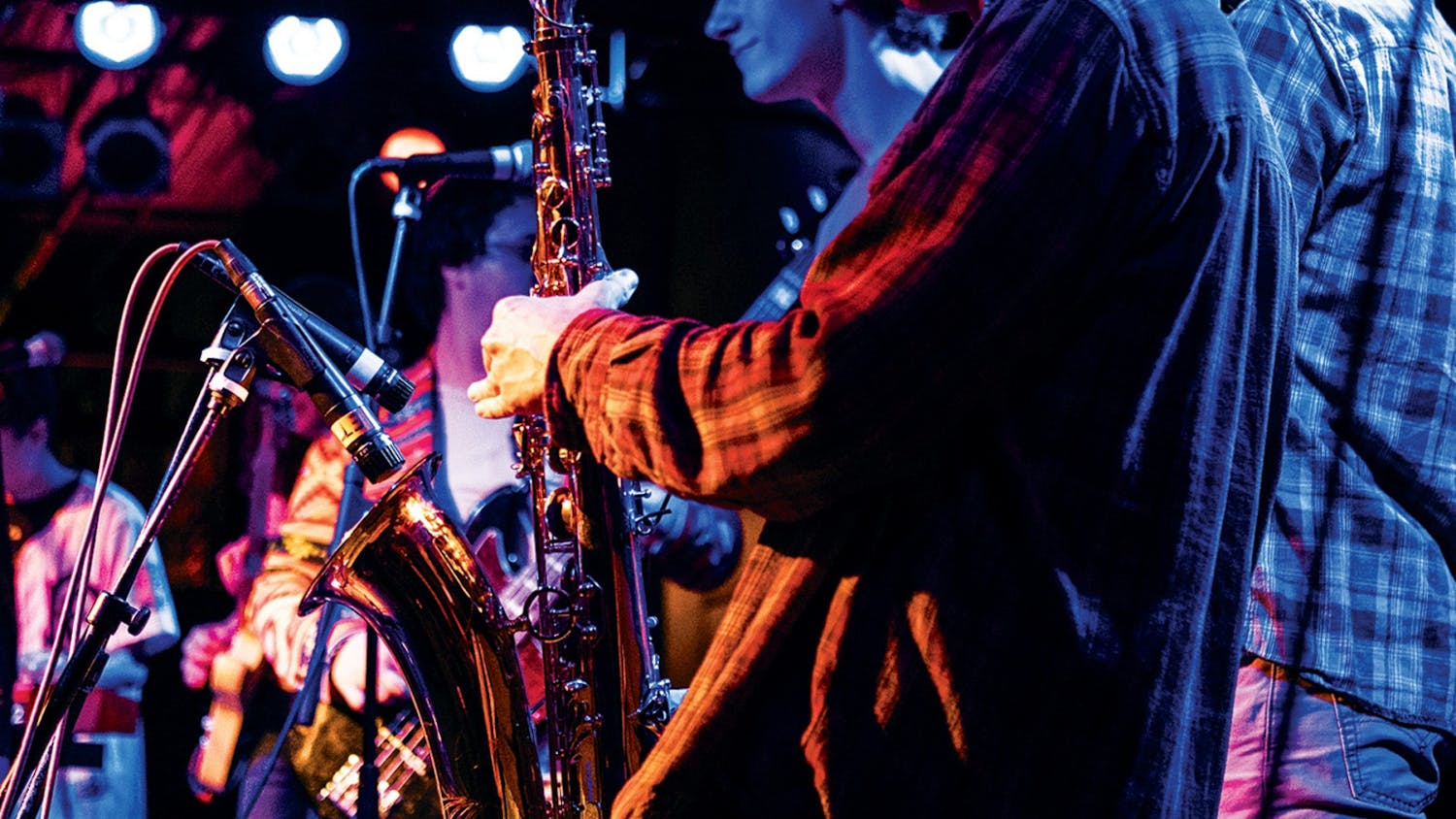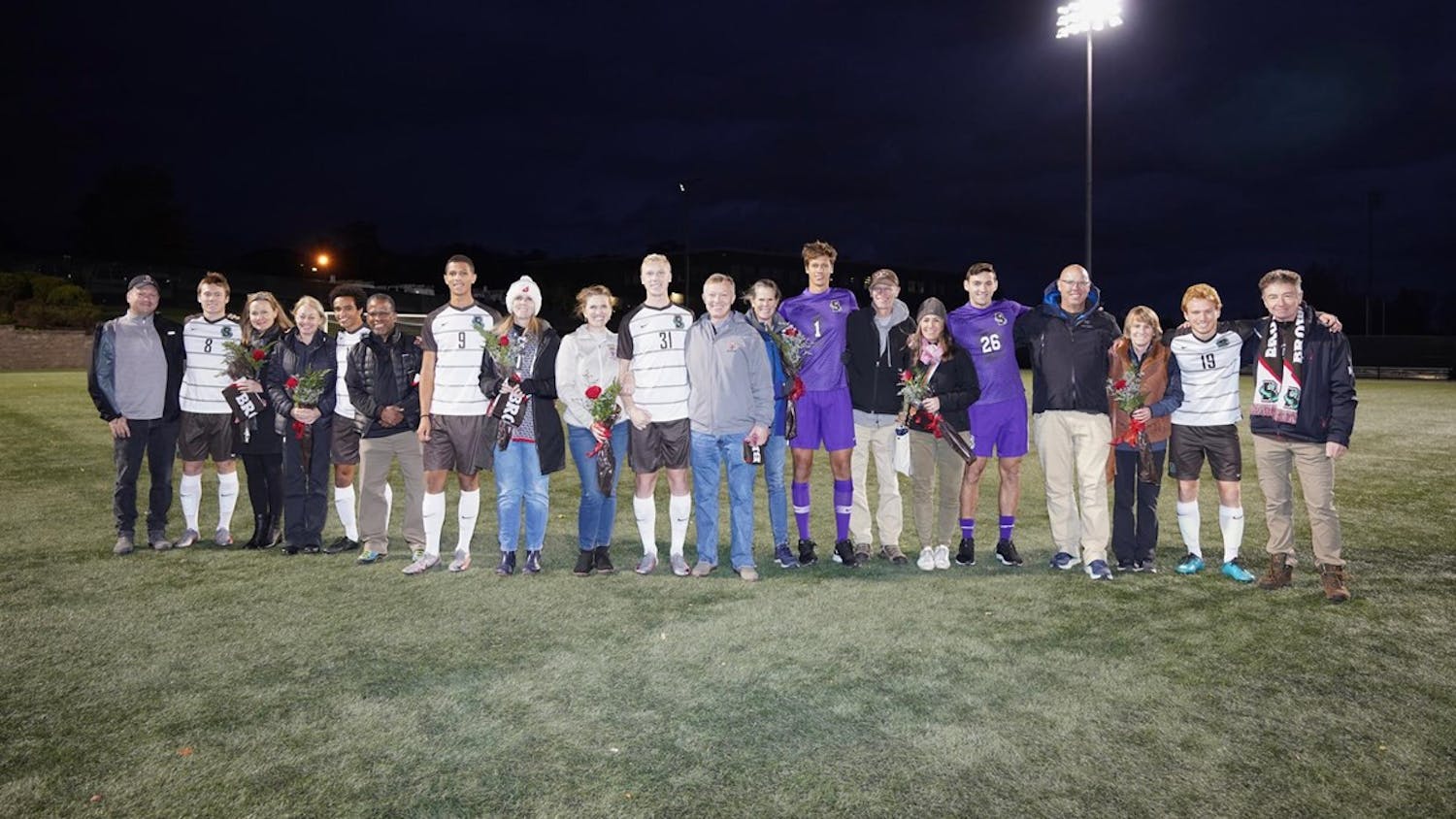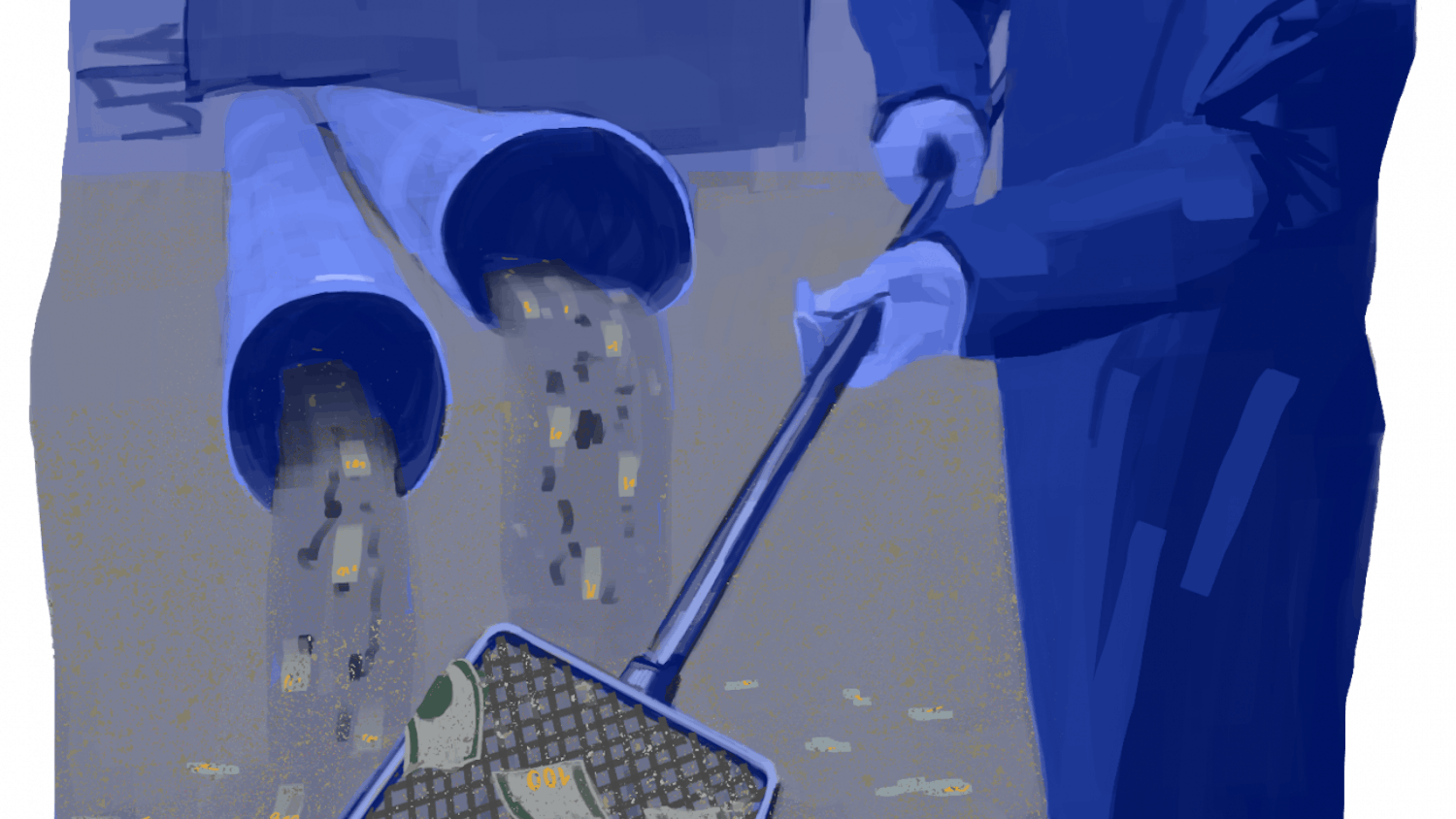Deep in the recesses of the John Carter Brown Library, Kenneth Ward, curator of Latin American books, stood before 32 items from the ancient world. "These are my babies," Ward said. "When you hold a book, you support the spine," he demonstrated as he cradled one of them in his hand.
Ward spoke to more than a dozen students as they "pet" rare materials at the JCB's Rare Books Petting Zoo last Thursday. The event was one in a series offered by the Charles H. Watts II History and Culture of the Book Program. The program, which aims to nurture appreciation for rare books among Brown and Rhode Island School of Design students, is hosting a series of events centered on its fall exhibition, "Mind Your Business: Records of Early American Commerce," and the theme Books of Business/Business of Books.
At the Petting Zoo, Ward pulled materials from the library related to the Mexican book trade. "I've probably overstocked the table," Ward said as he led the way downstairs to the conference room. The library has one of the best collections of Latin American books in the world, he said. "There are few places you can consult materials side-by-side as you can do here."
Ward chose 32 items, including primers, dictionaries and invitations to funerals. They ranged in age, covering a time span of about 300 years from 1511 to 1801. They were also bound with a range of materials, including silk, vellum, leather and pasteboard - paper pressed together to create a thick material. Ward spoke of an Aztec phrasebook, which includes how to say "don't hire this guy, he's a drunk."
Ward was hesitant to pick a favorite. "You're asking me to pick my children," he said.
"This is such a rare and neat opportunity for students to get into the collection, to touch and feel the materials, to handle these rare books that they wouldn't otherwise have the opportunity to get close to," said Abby Saunders, event and marketing coordinator of the Watts Program.
Saunders worked with Margo Nishimura, deputy director and librarian at the JCB, to put together the program. "I really wanted to work with Kenl, and he chose the Mexican book trade as the theme," Saunders said. Ward has "an amazing wealth of knowledge, especially about Mexico and South America and the book world in those areas," she added.
Before launching into his discussion of the materials, Ward advised students to handle the books gently, though many students did not start petting anything until later in his talk. He showed students how to hold a book like a baby and how to turn pages from the top or bottom corners without gloves. He explained that the gilding or decoration on the foredge of a book can come off if the pages are ruffled. Beside many of the books, there were "cradles" to hold them open at an angle less than 180 degrees so as to not damage the spine.
Ward told students about the first printing presses, indigenous languages, the business of printing and typography. "I had no idea that the first printing press in America was in Mexico," said Susan Chakmakian '14, an English concentrator who works with rare books at the John Hay Library.
"I enjoy reading old books and manuscripts because I feel like it brings us closer to history," said Zachary Rothstein-Dowden '13, a classics concentrator who attended the event. "To read words that were printed hundreds of years ago is exciting."
Ward expressed awe that many of the items he was presenting, such as edicts from the Spanish Inquisition and primers used as teaching tools for children, were never meant to last through the years - the JCB has the only known copy of an inquisition edict, Ward said. He also spoke at length about a proof sheet, possibly the only one to survive, he said. The lines on the proof sheet, which was historically used to align text, are crooked and the spacing is off because the type was not tightly locked in the press.
Though the morning involved a lot of book-handling, one book remained untouched. The Tovar Codex, which tells the story of wandering Mexican tribes, had a "do not touch" sign. The book is "priceless" and loaned out to institutions, Ward said. But students could flip through the other rare texts, including the Aztec dictionary, the earliest dictionary written and published in the New World, according to Ward. George Parker Winship originally bought the book as part of a collection from Nicholas Leon in 1896 for just over $2,000 in silver. "Books ripen like fine wines," Ward told The Herald after the event. But he was reluctant to give exact price estimates of these texts today.
There is occasionally "anger and anxiety" from activists, collectors and historians in Latin America about "their cultural patrimony" being dislocated north, Ward added. But he said that books and manuscripts have moved around the world for centuries.
Digitalization will now make these rare books more accessible. The library is participating in Primeros Libros, an effort to digitize every book printed in 16th century Mexico.
The zoo is "a good way of promoting the conservation and preservation of these very special objects," Saunders said. The Watts Program will be offering more events related to historical texts through the semester. Lucas Mason-Brown '13 will give a talk Oct. 13 on his work cracking the code of the "Mystery Book," written by Roger Williams, and well-known book artist Maureen Cummins is offering a workshop on "How to Start Your Own Fine Press and Publishing Venture" Dec. 1.
"We have such great materials here that students may not know about," Saunders said. "It's a good way to get students into the collection."
Correction: Due to an editing error, the article originally incorrectly described an Aztec phrasebook as the third oldest book featuring printed music and gold print on the title page.




